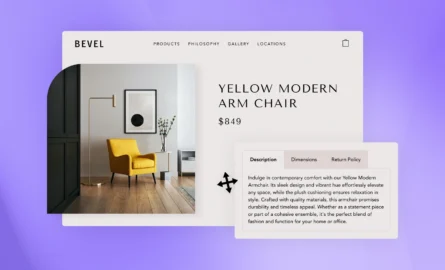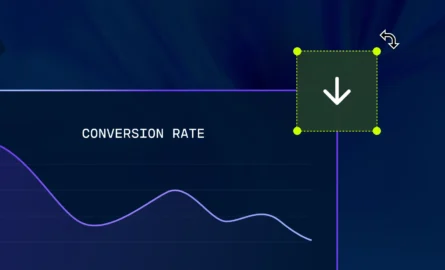Should You Consider Influencer Marketing for Your Ecommerce Store?
Influencer marketing is one of the fastest-growing trends in the advertising world. This segment of the marketing industry was worth $8 billion in 2019, and it’s projected to be worth $15 billion by 2022.
But at its core, this trend isn’t particularly innovative. Essentially, it’s just another variation of celebrity endorsements and testimonials.
In exchange for a fee, a well-known and respected figure will recommend your product. This practice goes back to the 1760s, when the chinaware producer Josiah Wedgwood and Sons advertised that their products were sought out by the British royal family.
The difference between celebrities and influencers is that celebrities typically became famous through traditional channels (television and film, music, sports, etc.), while influencers became famous through social media. And for your bottom line, the difference is that influencers are much more affordable.

There are many other benefits to hiring an influencer to promote your products as well. We’ll go over those benefits and everything else you need to know about influencer marketing below.
How Much Influencer Marketing Costs
The cost of an influencer marketing campaign is affected by many factors, including:
- Platform: While Instagram is the most popular platform for influencer marketing, Snapchat, YouTube and other platforms are also options. Influencer marketing isn’t as popular on less visual platforms like Twitter, as the personal connection of users seeing the influencer’s face next to your product is an important part of this technique’s appeal.

- Products: Generally, influencers will charge higher rates for more expensive products and lower rates for less expensive products.
- Followers: The more followers an influencer has, the more people you’ll be able to reach with your campaign. Also, the more followers they have, the more they’ll charge you for their services.
- Engagement: Look at likes and comments to get a feel for how engaged an influencer’s audience truly is. You can also use rating tools to help determine their influence.
As far as specific rates go, an analysis from Digiday provided the following estimates:
- Instagram: $250 per post for influencers with fewer than 50,000 followers, and an extra $1,000 for every 100,000 followers beyond that (rates go as high as Kylie Jenner’s $1,266,000 per post).
- Snapchat: Rates range from $500 for a video with 1,000-5,000 views to $30,000 for a video with 50,000-100,000 views.
- YouTube: Per video, $2,000 for every 100,000 followers.
What to Look for in an Influencer
You can contact influencers directly through social media, or you can use a dedicated influencer marketplace like HYPR. During your search, the following tips will help you find the right influencer for your ecommerce store:
- Relevance: Even if an influencer’s account has millions of followers, that won’t help you if their content has nothing to do with your products. For example, if you sell kitchenware, promoting your products with a video game reviewer probably wouldn’t do you much good — you’d want a chef or something similar.
- Voice: Within each social media niche, the personalities of influencers vary wildly. Do you want someone fun and entertaining who can add personality to your brand? Or are you looking for more of a serious authority who can lend your brand some gravitas? Thoroughly review an influencer’s content to make sure they’re capable of communicating the tone you want to establish.
- Reputation: There have been a number of influencer scandals in recent years. If you associate your brand with someone who’s controversial, it may damage your reputation and cause you to lose sales in the future. Research the influencers you want to work with and confirm that there are no red flags before you move forward.
How to Evaluate an Influencer Marketing Campaign
Before you can evaluate your campaign, you need to determine what goal you’re trying to achieve.
Are you simply looking to improve brand awareness? In that case, in-platform metrics such as likes can show you how well you’re doing.
If you’re trying to generate leads, then you’ll need to measure how much traffic is being driven to your store. And if you’re aiming to generate sales, you’ll need to go one step further and see how many of the visitors who land on your site from the influencer’s account are being converted into paying customers.
Once you know which metrics to measure, over time you’ll be able to see the types of posts that work well and the types of posts that don’t. Then, you can collaborate with the influencer to prioritize the types of posts that work well and get more value out of your investment.
Pros and Cons of Influencer Marketing
Influencer marketing is effective for some businesses, but not so much for others. Before you invest in this area, consider these pros and cons:
Pros
When an ad comes on the radio, you can switch over to another station with the quick switch of a dial. On TV, it’s even easier to avoid ads — you’re able to fast-forward through commercials for anything you’ve recorded, and you can watch content on streaming platforms like Netflix that don’t have ads at all.
While traditional ads interrupt the content that the user wants to consume, promotions from an influencer come from an account that the user chooses to follow. So, people are more likely to pay attention to the ad you’re paying for.
And even when a customer is exposed to a traditional ad these days, most of the time they won’t be persuaded to make a purchase. They know that your main goal is to make money, so they’ll expect you to exaggerate the benefits and ignore any flaws of your product instead of providing them with an objective assessment.
Influencer marketing allows you to break through this trust barrier. The Federal Trade Commission requires influencers to disclose paid ads, but most influencers stress that they only promote products they truly believe in. The influencer has built up a reputation as a credible source of information to their followers, which makes their endorsement much more persuasive than your average ad.

Another benefit to influencer marketing is that it improves search engine optimization (SEO).
Google, Bing and similar services use complex algorithms to determine where sites are ranked in their search results. The higher your site ranks, the more traffic you’ll be able to attract to your store.
Backlinks, which are links to your site from another source, are one of the most important factors considered by these search algorithms. The logic is that if other people are linking back to your site, it’s a sign your content is valuable and should be ranked higher than other options. Also, a backlink from a popular source is given more weight than a backlink from a less popular source.
Each influencer endorsement gives you a backlink from an especially popular source, which will help you rise in the search rankings and attract visitors who might have otherwise gone to one of your competitors.
Cons
With celebrity endorsements, it’s easy enough to confirm that the celebrity you’re hiring is famous. You’ve seen them on TV, heard them on the radio, etc.
But with influencers, it can be much more difficult to determine how famous they are. People are able to buy fake followers for their social media accounts and pretend like they have much more influence than they actually do. As a result, at least 15% of spending on influencer marketing is wasted on fraud, which totaled $1.3 billion in losses in 2019.
To avoid influencer fraud, don’t just look at the number of followers; look at their engagement rate as well. If an account has hundreds of thousands of followers but their posts are only getting a few likes, there’s probably some fraud going on.
The Bottom Line
Influencer marketing is generally more affordable than traditional celebrity endorsements, but it still might be too much for the marketing budgets of smaller stores. Also, you need to take care to avoid controversial figures and influencer fraud.
But if you have the budget for it and you vet your options carefully, influencer marketing is an excellent way to boost brand awareness, improve SEO and ultimately generate more revenue from your ecommerce store.
Adam Ritchie is a writer based in Silver Spring, Maryland. He writes about ecommerce trends and best practices for Shogun. His previous clients include Groupon, Clutch and New Theory.

Adam Ritchie
Adam Ritchie is a writer based in Silver Spring, Maryland. He writes about ecommerce trends and best practices for Shogun. His previous clients include Groupon, Clutch and New Theory.



